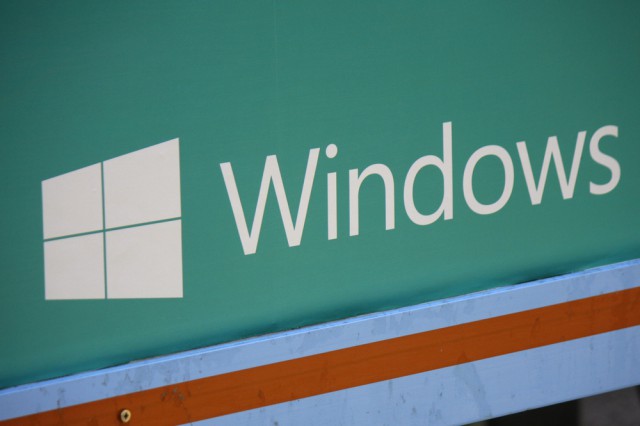
Mysterious Windows driver causing problems for users
If you’ve been experiencing weird problems with Windows over the past couple of days, the problem could be down to a mysterious driver that Microsoft has pushed out for Windows 7, Windows 8.1, and Windows 10.
The driver, called "Microsoft -- WPD -- 2/22/2016 12:00:00 AM -- 5.2.5326.4762" is causing a couple of problems for users, including failed installations, and Windows Phones and Android devices failing to connect to the target PC.

Microsoft reissues its infamous snooping patches for Windows 7 and 8.1
It’s good to keep Windows up to date, as it ensures you’re safe from the latest security threats, and you might benefit from other improvements. However, you shouldn’t always blindly install every patch that comes along.
Case in point are the infamous snooping patches KB2952664 (for Windows 7) and KB2976978 (for Windows 8.1), which today get yet another outing.

Windows 10 usage on Steam falls again for the second month in a row
Yesterday, I reported on how Windows 10 usage had fallen in February according to the latest figures from NetMarketShare.
Today, Steam releases its hardware survey for February, and that shows that Windows 10 usage has fallen on the gaming platform too, and not for the first time. Usage in January was also down from the month before. Is it the start of a downward trend?

Bad news for Microsoft as Windows 10 loses market share -- again
According to NetMarketShare, in January, Windows 10 hit a big milestone. The new OS managed to grow by nearly one percentage point, to give it over 25 percent of the market. That’s pretty good going.
However, in February, Windows 10 went back into reverse gear, losing share, and not for the first time.

How to find (and copy) your Windows product key
There are all sorts of reasons why you might need to locate your Windows product key. Perhaps you’re thinking of upgrading from Windows 7 or 8.1 to Windows 10 (doing so is still free, despite what Microsoft has said), or you might want to perform a clean install.
In the past, tracking down the key usually involved finding your installation media, but the more modern approach is to simply pull it directly from your Windows installation.

Microsoft reissues snooping patches for Windows 7 and 8.1
This week, Microsoft re-released the telemetry updates KB2952664 (for Windows 7) and KB2976978 (for Windows 8.1).
While we don’t know what these will do this time around (Microsoft’s description is giving little away), in the past they triggered a snooping Windows task called DoScheduledTelemetryRun, and were linked to the infamous GWX (Get Windows 10) campaign that forced OS upgrades on unwilling Windows 7 and 8.1 users.

Windows 10 is now on one in four systems -- but can it catch Windows 7?
While Microsoft’s unconvincing numbers portray Windows 10 as an unstoppable operating system gobbling up market share, NetMarketShare’s monthly OS usage figures suggests things are going well for Windows 10, but that it will still be a long time before it starts to trouble Windows 7’s continuing dominance.
January proved to be a good month for the new OS, certainly better than December was at least.

Microsoft shows Windows 10 market share growing steadily, but the numbers are fake [Updated]
Microsoft’s own Windows 10 share numbers have always seemed a little, well, generous. While NetMarketShare’s OS usage share figures show the new operating system doing fine, but lagging some distance behind Windows 7 (as you'd expect), Microsoft’s figures paint an entirely different picture.
Five months ago, the software giant showed Windows 10 hitting 50 percent in the US, and two months ago, it had the new OS overtaking Windows 7 globally. Today’s update though stretches the believability just a little too far.

Facing a backlash, Microsoft pulls post claiming Windows 7 is 'no longer able to keep up'
At the end of last week, Microsoft Germany published a post waving an early goodbye to Windows 7, and stating that the aging OS can "no longer keep up with the increased security requirements", and sticking with it could prove costly for users and businesses.
The software giant’s solution for Windows 7 users worried about security was, naturally, to switch to Windows 10. But, having faced an inevitable backlash from Windows 7 users and security experts, the company has pulled the post.

Microsoft waves an 'early goodbye' to Windows 7, pushes Windows 10 upgrades
Although Microsoft claims that Windows 10 is now more popular than Windows 7, analyst firm NetMarkShare’s monthly usage figures paint a very different picture. In December, for example, Windows 10 hit 24.36 percent globally, but it's dwarfed by Windows 7's 48.34 percent share.
It’s clear that Windows 7 is going to remain the number one desktop operating system for some time to come -- globally at least -- but Microsoft is desperate for those users to switch to Windows 10 and warns that Windows 7 support is coming to an end, and that the OS has outdated security and can’t keep up with today’s security needs.

Windows 10 enters 2017 not with a bang, but a whimper
Happy New Year! 2016 was certainly an interesting one for Microsoft and Windows 10. The software giant hit more than a few low points during the year, and while the new operating system managed to gain decent market share off the back of an incredibly aggressive push, its growth came shuddering to a stop once the free upgrade period ended.
December should have been a great month for Windows 10, with people buying new PCs for the holidays, but actually it was a pretty lackluster month in which the new OS’s gains were minimal, and way less than those enjoyed by the aging Windows 7.

Apple releases macOS Sierra 10.12.2 -- here's what's new
A day after introducing iOS 10.2, Apple releases macOS Sierra 10.12.2. The update promises to resolve the graphics problems affecting the 2016 MacBook Pro line, adds some improvements, and fixes lots of bugs.
Another highlight of macOS Sierra 10.12.2 is that it now supports new installations of Windows 7 and Windows 8 in Boot Camp. The previous version limited users to Windows 10, but the older versions of Windows are still very popular -- and in high demand, apparently with Mac users.

CERT warning: Windows 10 is less secure than Windows 7 with EMET
In direct contrast to Microsoft's assertion that Windows 10 is its most secure operating system ever, the US-CERT Coordination Center says that Windows 7 with EMET offers greater protection. With EMET due to be killed off, security experts are concerned.
A vulnerability analyst from CERT, Will Dormann, advises Microsoft to continue the development of EMET. Microsoft says 'many' of EMET's features have been integrated into Windows 10, but the concern is that key components are missing, and others have been implemented in such a way that reduces their security.

Microsoft patches Windows flaw reported by Google
Microsoft has kept its promise and delivered a vulnerability patch for its Windows operating system, for a flaw, revealed by Google, which allowed attackers to gain full control of a targeted system.
Releasing the details in a security bulletin, Microsoft says the flaw in the Windows kernel "could allow elevation of privilege if an attack logs onto an affected system and runs a specially crafted application that could exploit the vulnerabilities".

How to speed up Windows 7 update checks
When Windows 7 checks for updates, the process can take an age. Often you might find yourself staring at the screen while nothing much seems to happen.
Finding the list of updates for you to install should only ever take a few minutes at worst, but for many people that isn’t the case. Thankfully there’s a quick fix to try.
